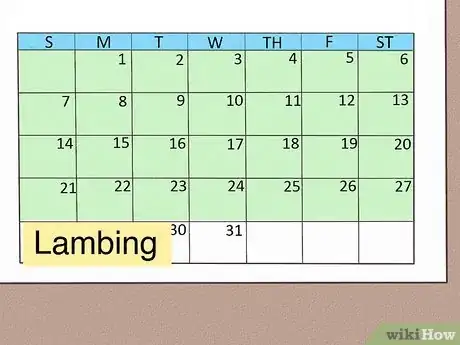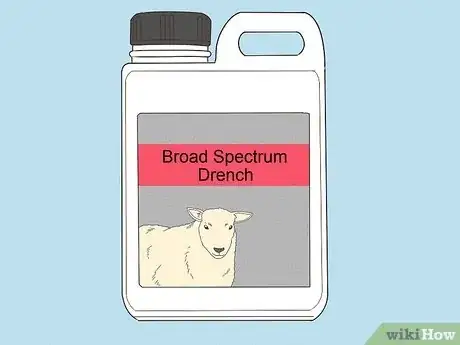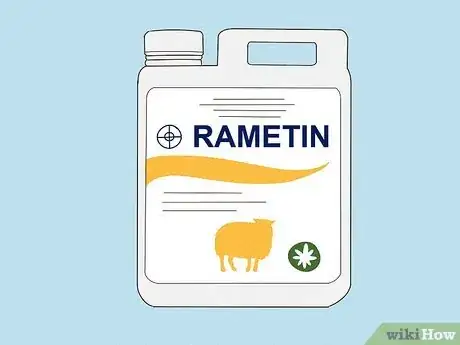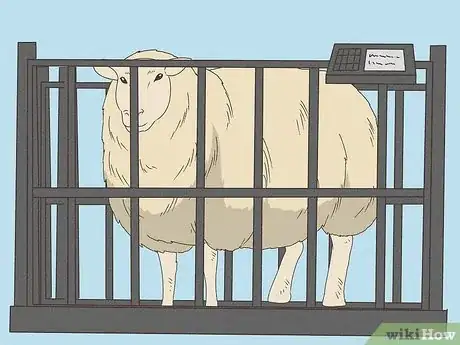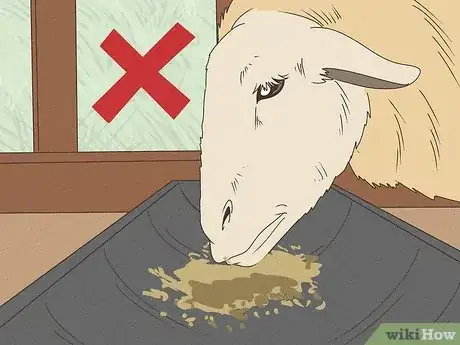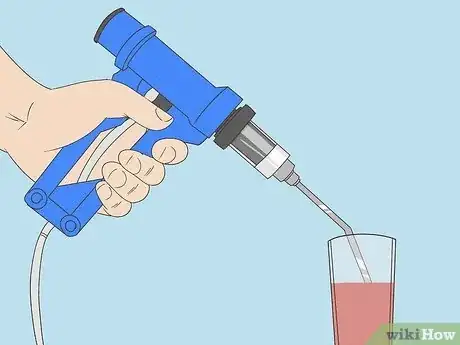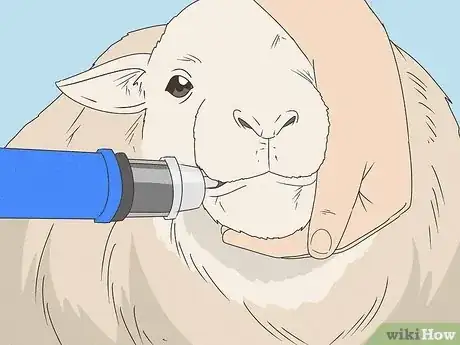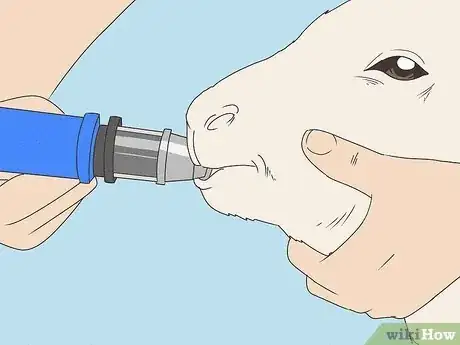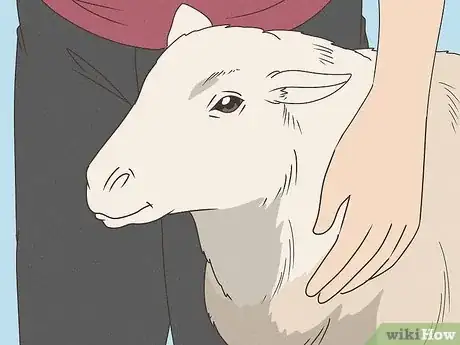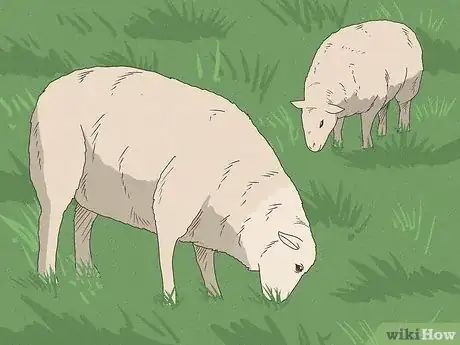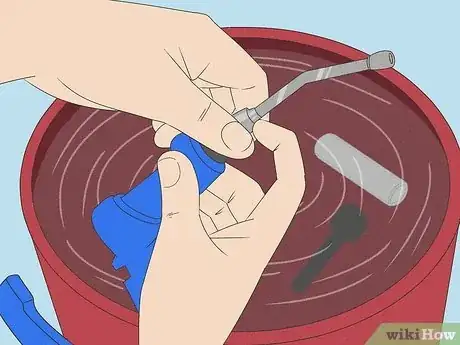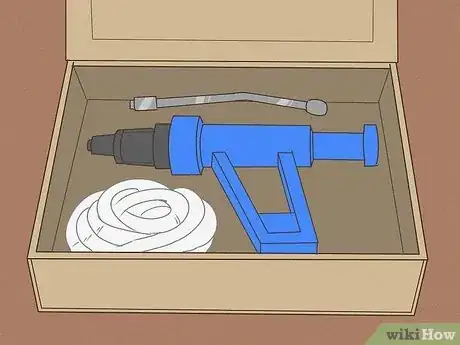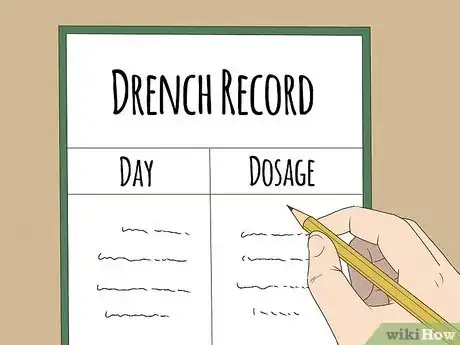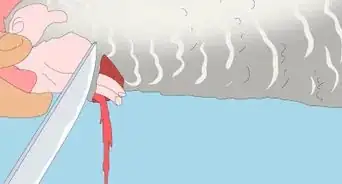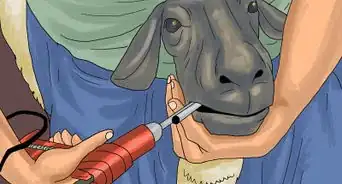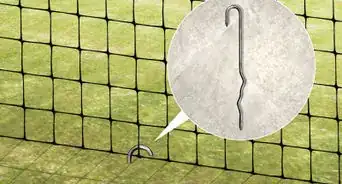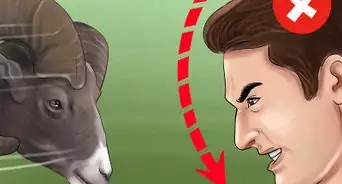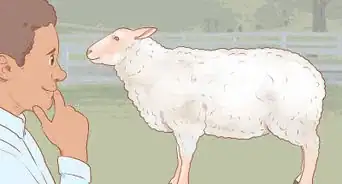This article was co-authored by wikiHow staff writer, Hannah Madden. Hannah Madden is a writer, editor, and artist currently living in Portland, Oregon. In 2018, she graduated from Portland State University with a B.S. in Environmental Studies. Hannah enjoys writing articles about conservation, sustainability, and eco-friendly products. When she isn’t writing, you can find Hannah working on hand embroidery projects and listening to music.
There are 13 references cited in this article, which can be found at the bottom of the page.
This article has been viewed 46,165 times.
Learn more...
Do your sheep have worms? If so, your vet may have recommended “drenching” them, or administering oral deworming medication. Drenching your sheep is a fairly straightforward process, and following the right steps will keep your sheep healthy and safe while you do it. In this article, we’ll walk you through the drenching process, including when to drench, how to do it safely, and what to do afterward.
Steps
When to Drench Sheep
-
1Drench dry sheep during shearing time. If your sheep are not used for breeding, you only need to drench them once a year. Most farmers choose to drench during shearing time.[1]
- If you think that your sheep may be dealing with worms and it isn’t shearing season, collect a sample of their stool and bring it to your vet for testing. They’ll be able to tell you whether or not you should drench.
-
2Drench breeding sheep 4 weeks before lambing. If you are going to breed your sheep, try to drench them about 4 weeks before they give birth. This gives the medication plenty of time to work so the lambs have less of a chance of having worm problems.[2]Advertisement
-
3Drench lambs 1 or 2 weeks after weaning. Lambs also need to be drenched to avoid any worm problems. Wait for 1 to 2 weeks after they’ve been weaned, then drench them.[3]
Calibrating and Calculating Dosage
-
1Choose a broad spectrum drench to target multiple parasites. Broad spectrum drenches are good when your flock faces threats from a wide range of parasites. These include the benzimidazoles (“BZ,” or white drenches), levamisole (“AV,” or clear drenches), and macrocyclic lactones (“ML,” or yellow drenches).[4] You can find sheep drench at your local livestock or tractor supply store.
-
2Pick a narrow spectrum drench for 1 specific parasite. If your area only faces 1 specific type of worm or parasite, a narrow spectrum drench is right for you. Popular narrow spectrum drenches include Combat, Polevault, and Rametin.[5]
-
3Calibrate the drench gun. Calibrating the drench gun ensures that it will give an accurate dose of medicine. Grab an empty needle-less 10 ml syringe and remove the plunge. Squirt a full 10 ml (0.34 fl oz) dose into the syringe from the drench gun, and make sure it fills it up to the 10 ml mark. If the syringe fills up all the way, it means your drench gun is holding the right amount of liquid. Repeat this 5 to 10 times to ensure your gun is calibrated correctly.[6]
- Make sure that the drench gun is clean, free of leaks, and put together properly. Twisted tubes can result in harmful air bubbles.
- Check for leaks by placing your finger over the nozzle of the empty gun and squeezing the trigger.
-
4Weigh the largest sheep. The dosage of your drench should be determined based on the weight of the largest sheep.[7]
- Do not base dosage on a smaller sheep. Using a smaller dose than necessary can cause the parasites to become resistant to the drench, making the medication less effective.
- On the other hand, giving sheep a dramatically larger dosage than necessary could make the animal sick and may result in its death.
- If the sheep in your flock vary greatly in size, split the group into different sections based on weight. Weigh the largest sheep in each group and calculate a different dosage for each group based on that.
-
5Calculate the dosage using the sheep’s weight and your drench type. The correct dosage will vary based on the weight of your largest sheep and on the specific drench used. Each drench is slightly different, so read your package’s instructions to figure out the proper dosage ratio.[8]
- Even if you’ve used a certain drench before, read the instructions anyway. Dosage rates do change over time, so it’s worth double checking every time you drench.
Drenching Safely
-
1Withhold food from the sheep for 12 to 24 hours. If you’re using a white or clear drench, studies have shown that withholding food before treatment can improve the efficacy of the drench. Avoid feeding the sheep before drenching if your specific drench recommends it.[9]
- If you aren’t sure whether or not to withhold food, check the instructions on your drench. If you’re still unclear, talk to your vet.
-
2Herd the sheep into an enclosed pen or yard. It’s much easier to drench sheep when they’re all in one enclosed location. Herd your sheep into a small area so you can get to them easily.[10]
- It’s important to keep track of which sheep have been drenched and which haven’t throughout this process.
-
3Measure out the drench in your drench gun. Most drench guns come with plastic tubing that runs from the gun to the bottle of drench (you can put the bottle of drench inside a backpack to easily keep it with you during the process). Screw the plastic tubing onto the bottle of the drench, then squeeze the handle on the gun to draw the drench into the syringe. Check the measurements on the side of the gun and keep pumping the handle until you get the right dosage.[11]
- Most drench guns have a dial on the side that allows you to set the dosage. Check this dial in between each drench to make sure that it remains set at the correct amount.
-
4Restrain one sheep at a time. Approach each sheep from behind and place your hand under its neck to hold it securely in place. Tilt the head slightly to the side to present yourself with a clear view of the mouth.[12]
- Even though tilting the head can help you administer the drench, keep in mind that the head should be mostly horizontal. Allowing the sheep's head to tilt too far to one side can cause some of the drench to slip out of the mouth, resulting in improper dosage. Pulling the head back too far can prevent the sheep from swallowing.
- Do not put your thumb or fingers in the mouth, even if doing so would help you steady the sheep. The sheep will probably bite you if it senses your fingers near or inside its mouth.
-
5Insert the nozzle into the sheep’s mouth, over its tongue. Slip the nozzle of the drench gun into the corner of the sheep’s mouth, in between the top and bottom teeth. Push the gun in so that the entire nozzle is in the sheep’s mouth and the tip rests on the back of the sheep’s tongue..[13]
- Stay situated behind the sheep as you do this—sheep will instinctively run forward, and it’s much easier to control them if you hold their chin from behind them.
- Pushing the nozzle too far back into the sheep’s mouth can puncture the tissue at the back of the throat, which can be fatal. Be sure to rest the tip of the nozzle on the back of the tongue, and do not press into the back of the throat.
-
6Squeeze the trigger to deliver the drench. Keeping the nozzle pointed at the back of the throat, quickly squeeze the trigger to administer the entire dose at once. The sheep may squirm as you squeeze the drench into its mouth, so prepare to tighten your grip to prevent the sheep from breaking free.[14]
- Be gentle yet firm while delivering the dose to each sheep. If you are too aggressive, you may damage the back of the throat, break teeth, or get the drench into the sheep's lungs.
-
7Remove the nozzle from the sheep’s mouth after it swallows. Once you’ve administered the dosage, keep your hand on the sheep’s chin for a couple of seconds. After about 5 seconds, the sheep will swallow the dose, and you can carefully remove the nozzle from their mouth.[15]
- If you release the sheep before it swallows the dose, the drench may spill out of the mouth or the sheep could spit some of it out.
-
8Drench every sheep in the flock. Once you’ve drenched your first sheep, you can move onto the rest of them. Keep track of which sheep have been drenched and which haven’t by marking the drenched sheep with chalk.[16]
-
9Release your sheep onto a clean pasture. After drenching your sheep, allow them to graze over a clean pasture to minimize the risk of possible re-contamination. Let the old pasture rest for as long as possible before returning the sheep to kill off any parasites.[17]
Cleaning and Recording Drench Info
-
1Clean the drench gun with warm water after drenching. Soap and disinfectants can damage the seal on the gun, leading to leaks. Disassemble the drench gun as much as you can and use warm water to rinse all of the parts. Set them out to air dry before storing to prevent mold and mildew.[18]
-
2Store any unused drench in a dark, cool place. If you have any drench left over, you can save it for next time. Put the lid on it and store it in an area that stays below 77 °F (25 °C). Keep it out of direct sunlight so it stays fresh.[19]
- Be sure to check the expiration date before using the drench again.
-
3Write down the day you drenched and the dosage. Keeping a record will help you determine the cause of the parasites and when you need to treat them again.[20] Every time you drench your sheep, log it in a notebook that you can refer back to later.
- If your sheep are still sickly after a few days, the problem may be something besides worms. In that case, talk to your vet about your next steps.[21]
Community Q&A
-
QuestionWhat parasites does a sheep get if it isn't drenched?
 Community AnswerIt depends on where you live, but parasites include: Gastro-Intestinal worms (roundworms, nematodes, stomach worms), tapeworms (Moniezia), lungworms (Dictyocaulus filaria, Muellerius capillaris), liver flukes (Fasciola hepatica), meningeal worms (Paralaphostrongylus tenius), and Coccidia (Eimeria).
Community AnswerIt depends on where you live, but parasites include: Gastro-Intestinal worms (roundworms, nematodes, stomach worms), tapeworms (Moniezia), lungworms (Dictyocaulus filaria, Muellerius capillaris), liver flukes (Fasciola hepatica), meningeal worms (Paralaphostrongylus tenius), and Coccidia (Eimeria). -
QuestionHow often should sheep be drenched?
 Community AnswerAfter the first time, repeat after 14 days. Then do it every three months using the same method.
Community AnswerAfter the first time, repeat after 14 days. Then do it every three months using the same method.
Things You'll Need
- Drench
- Drench gun
- 10 ml syringe
References
- ↑ https://nre.tas.gov.au/Documents/Sheepworms.mlc.pdf
- ↑ https://nre.tas.gov.au/Documents/Sheepworms.mlc.pdf
- ↑ https://nre.tas.gov.au/Documents/Sheepworms.mlc.pdf
- ↑ https://www.agric.wa.gov.au/livestock-parasites/barbers-pole-worm-sheep?page=0%2C1
- ↑ https://www.agric.wa.gov.au/livestock-parasites/barbers-pole-worm-sheep?page=0%2C1
- ↑ https://www.scops.org.uk/workspace/pdfs/are-you-drenching-correctly.pdf
- ↑ https://www.scops.org.uk/internal-parasites/treating-correctly/
- ↑ https://www.scops.org.uk/workspace/pdfs/are-you-drenching-correctly.pdf
- ↑ https://www.scops.org.uk/workspace/pdfs/are-you-drenching-correctly.pdf
- ↑ https://www.youtube.com/watch?v=b3CxjSzuWKY&t=104s
- ↑ https://www.youtube.com/watch?v=b3CxjSzuWKY&t=53s
- ↑ https://www.youtube.com/watch?v=b3CxjSzuWKY&t=95s
- ↑ https://www.youtube.com/watch?v=b3CxjSzuWKY&t=149s
- ↑ https://www.youtube.com/watch?v=YK1jbqnuBwU&t=249s
- ↑ https://www.youtube.com/watch?v=b3CxjSzuWKY&t=152s
- ↑ https://www.scops.org.uk/workspace/pdfs/are-you-drenching-correctly.pdf
- ↑ https://nre.tas.gov.au/Documents/Sheepworms.mlc.pdf
- ↑ https://www.beefmagazine.com/cowcalfweekly/how-properly-clean-syringe
- ↑ https://www.drugs.com/vet/cydectin-oral-drench-for-sheep.html
- ↑ https://www.youtube.com/watch?v=YK1jbqnuBwU&t=296s
- ↑ https://nre.tas.gov.au/Documents/Sheepworms.mlc.pdf

